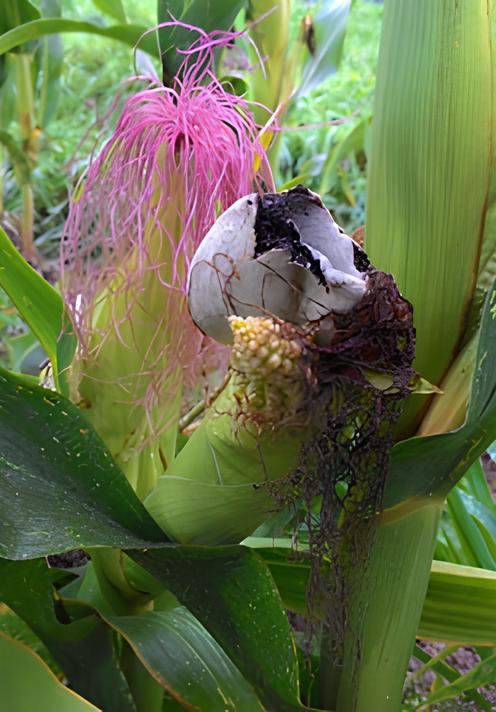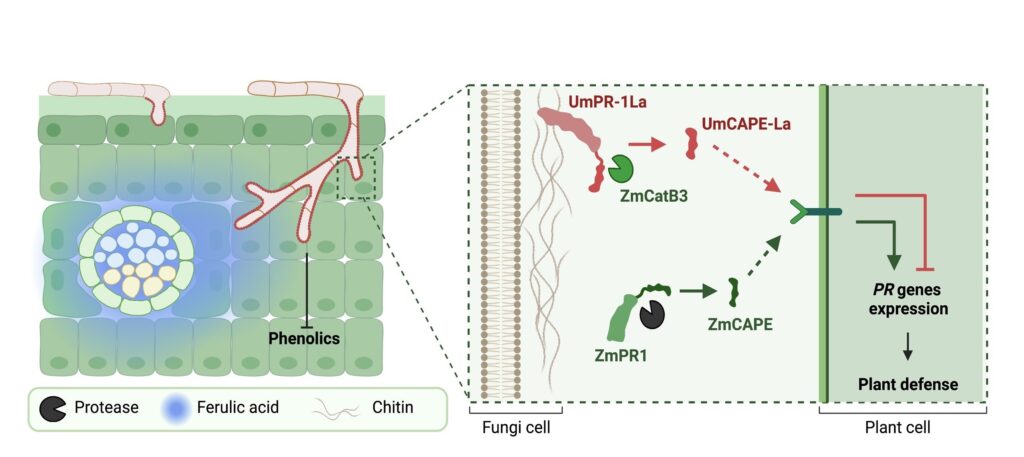In the intricate balance of nature, every biological kingdom competes for vital resources essential to their survival in specific habitats. This struggle is particularly critical for plant kingdoms due to their inability to move. Unlike animals, plants cannot relocate to evade threats or adverse conditions. Consequently, they face numerous challenges, including coping with dramatic climate changes, adapting to nutrient-poor soil, and defending against predatory pathogens. Pathogens, in particular, pose a significant threat; these unseen adversaries have the potential to devastate entire plant populations.
In response, plants develop complex defense mechanisms in an ongoing battle, ensuring their survival in a constantly changing and competitive natural world. These mechanisms enable plants to detect the presence of harmful invaders and mount effective responses to ward them off. What makes this system even more remarkable is its ability to adapt and constantly evolve to face a myriad of ever-evolving pathogens, each presenting new challenges. The ongoing evolutionary race within the plant immune system allows them to resist and defend against a wide array of threats, ultimately ensuring their survival and reproduction in a world full of challenges. This process of adaptation and response mirrors the unending evolutionary race seen in nature, where predators and prey continually adapt to outwit each other.
Fungi are ubiquitous in nearly all ecosystems, constituting a remarkably diverse group of microorganisms. Despite the vital roles fungi play in our survival and daily lives, in the ongoing conflict between plants and pathogens, fungi stand out as significant adversaries, posing a severe threat to plant health. They are not only invaders but also adapted survivors, evolving various strategies to counteract plant defense mechanisms during the co-evolutionary arms race.
Regardless that plants have developed elaborate immune mechanisms over their prolonged battle with pathogens, fungi manage to develop sophisticated strategies to infect plants. They overcome plant defense responses, penetrate plant cells, and create intricate structures within the plant’s anatomy, utilizing the plant’s resources for survival and reproduction. This process eventually disrupts the plant’s tissues, causing leaves to wilt, and fruits to rot and impair overall plant growth.
In the struggle for survival between plants and fungi, a group of homologous PR-1 proteins is found in both fungi and their hosts. This PR-1 protein, initially identified in plants, plays a crucial role in priming the plant’s immune system. However, the homologous PR-1 (PR-1-like; PR-1L) in fungi takes on a different role—it enhances infectivity towards the host. Fungi ingeniously evade the plant host’s immune system by employing PR-1L, enabling a successful invasion.

(Photo provided by Dr. Lay-Sun Ma)
To uncover how fungi neutralize plant defenses using PR-1L, a recent study led by Dr. Lay-Sun Ma from the Institute of Plant and Microbial Biology at Academia Sinica, in collaboration with Dr. Chuan-Chih Hsu and Dr. Yin-Ju Chiang, delved into the world of the corn smut fungus Ustilago maydis. Their research unveiled a dual role played by PR-1L within this fungus—it not only suppresses plant defense mechanisms but also sustains the fungus’s ability to cause disease. This study represents the first instance of a sophisticated attack and defense strategy between fungi and their hosts, facilitated by homologous proteins, being elucidated. The findings hold promise for enhancing crops’ resistance against fungal pathogens.
🌽 UmPR-1La acts as a virulent factor in U. maydis.
The fungus encodes two PR-1L proteins with CAP domains: UmPR-1La and UmPR-1Lb. These proteins feature N-terminal signal peptides for secretion, Ser/Thr-rich extension regions for cell-wall association, and C-terminal CAP domains for protection and immune-system suppression. Studies show that UmPR-1La is induced during U. maydis‘s biotrophic growth, exerting a substantial influence on its pathogenicity toward plants.
🌽 UmPR-1La detects toxic plant-derived phenolic compounds and subsequently induces hyphae to resist them.
UmPR-1La localizes on the cell wall to safeguard the fungus against plant-produced toxic compounds. This protection is dependent on the caveolin-binding motif (CBM) within the CAP-domain, capable of binding with plant phenolics. Studies demonstrate that only fungal cells expressing UmPR-1La can form hyphal-like structures and survive in the presence of toxic substances.
🌽 U. maydis manipulates plant protease CatB3 to release CAPE-like a (CAPE-La) peptides from UmPR-1La, which are similar to the plant PR-1 protein’s CAPE peptides.
CAPE-La peptides presumably compete with plant CAPE for binding to an unidentified receptor, leading to the suppression of plant immunity and enabling the corn smut fungus to thrive within its plant host.

U. maydis utilizes UmPR-1La to detect phenolic compounds, triggering the formation of UmPR-1La-shielded hyphae as a defense against plant toxic phenolics. This mechanism directs fungal hyphal growth towards phenolic-enriched vascular bundles, facilitating nutrient absorption. Additionally, the cell surface localization of UmPR-1La facilitates the exposure of CAPE-La and its release by the protease CatB3. CAPE-La may bind to an unidentified receptor, suppressing plant immune responses and enhancing the U. maydis virulence.
【Reference】
Yu-Han Lin, Meng-Yun Xu, Chuan-Chih Hsu, Florensia Ariani Damei, Hui-Chun Lee, Wei-Lun Tsai, Cuong V. Hoang, Yin-Ru Chiang & Lay-Sun Ma*
(2023) Ustilago maydis PR-1-like protein has evolved two distinct domains for dual virulence activities. Nature Communications.
https://www.nature.com/articles/s41467-023-41459-4
By exploring the strategies employed in the ongoing battle between plants and fungi, we can deepen our understanding of this seemingly endless struggle for survival. This competition is an integral part of ecosystems, profoundly influencing the evolutionary trajectories of plants and fungi. It serves as a driving force, significantly contributing to the development of biodiversity. Throughout this process, fungi demonstrate remarkable adaptability, evolving a range of intricate attack strategies to evade and defend against plant immune systems. This poses severe threats to agriculture and ecosystems. Crop diseases not only affect farmers’ livelihoods but also impact global food supply and security. Therefore, there is an urgent need to enhance our understanding of plant-fungi interactions, develop more disease-resistant crop varieties, and implement more effective plant protection strategies. This will help sustain crop production and ensure an ample global food supply to meet the growing demands of the population.
These research findings offer us broader insights into fungal attack strategies and help us better protect plant diversity in natural ecosystems, ensuring their health and stability, and leading to sustainable agriculture and ecological balance. This seemingly endless battle is not only fascinating but also fuels our quest for deeper understanding, enabling us to better cope with this intricate competition.
